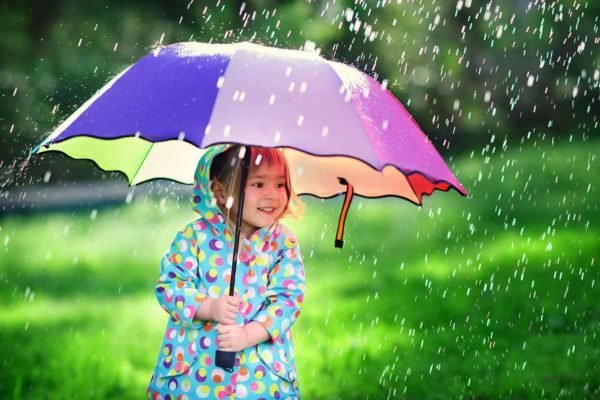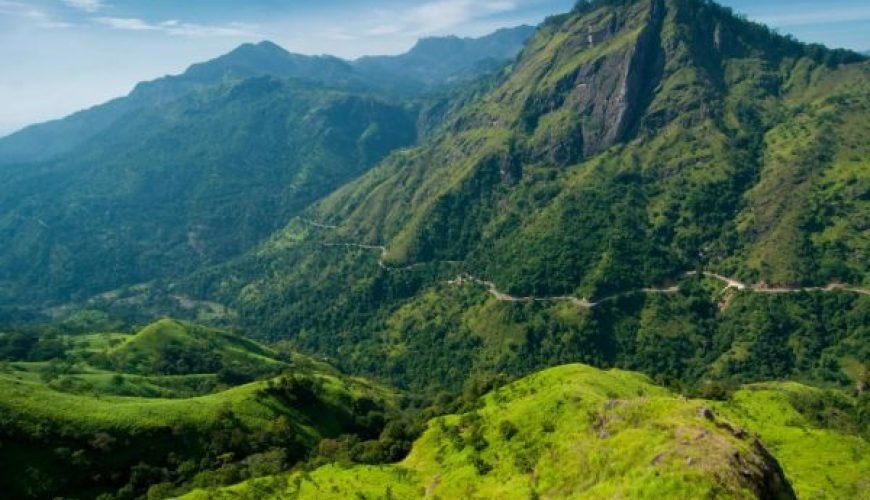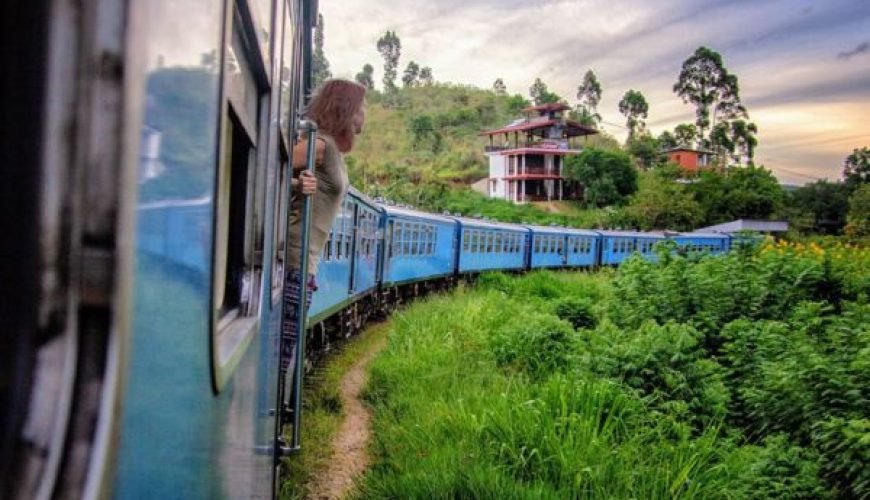
Sri Lanka, a tropical paradise, basks in sunshine and warmth for much of the year. Yet, determining the ideal time to visit can be perplexing due to the island’s two distinct monsoon seasons. Weather patterns in Sri Lanka defy predictability: you might wake up to clear blue skies during the rainy season, or encounter a sudden thunderstorm in the dry season. Embracing these natural fluctuations adds an element of adventure to your journey, but strategic planning can enhance your chances of favorable weather conditions.
Ultimately, the optimal time to visit Sri Lanka hinges on your preferences for location and activities. With our in-depth knowledge of the country, we can curate your luxury holiday experience precisely to your desires. Whether you crave cultural immersion, thrilling encounters with exotic wildlife, or simply seek blissful days lounging on sun-kissed beaches, our experts are here to assist you in pinpointing the perfect time for your dream getaway to Sri Lanka.
Essential Insights Before Your Journey:
- Peak Season: December to April (summer)
- Low Season: May to August (rainy season)
- Inter Monsoon Season: October to November (spring)
- Sri Lanka’s monsoons: The Maha (October to January) and Yala (May to August) monsoons distinctly affect different areas. The Maha monsoon impacts the northern and eastern regions, while the Yala monsoon influences the south and west.
- Prime beach months: January to April and mid-July to September (South), May to September (East)
- Wildlife viewing timing: Yala or Wilpattu National Park (January to October), Bundala National Park (December to April), Minneriya (July to September), and Kalpitiya (November to April)
December to April – Peak Season
December to April marks the peak season for your Sri Lanka holiday getaway. This period offers the best weather for exploring the southern and western regions, including popular destinations like Colombo, Kalpitiya, Bentota, and Galle. With average temperatures ranging from 73 to 90 degrees Fahrenheit (23 to 32 degrees Celsius), you can expect mild and pleasant weather throughout your journey.
One of the highlights of this season is the minimal rainfall from the Maha monsoon, ranging from 61 to 228 mm between December and January. This means you can explore iconic attractions like Yala National Park and the cultural triangle’s World Heritage sites—including Anuradhapura, Polonnaruwa, Sigiriya, Dambulla, and Kandy—without worrying about rain showers disrupting your plans.
Moreover, December to April is the perfect time for a refreshing swim in the ocean, particularly from January to March. Plus, if you’re lucky, you might catch sight of magnificent Blue and Sperm Whales during your coastal excursions.
Immerse yourself in the vibrant cultural celebrations of Sri Lanka during this season. In January, experience the Duruthu full-moon festival, followed by Avurudu on April 14th. April also marks the Sinhala and Tamil New Year, a week-long festival filled with lively festivities and traditional plantain-themed events, signaling the end of the country’s harvest season.
With so much to explore and experience, plan ahead for your travel and accommodation arrangements to make the most of your peak season adventure in Sri Lanka.

May to August – Monsoon & Low Season
From May to August, Sri Lanka experiences the full force of the Yala monsoon, bringing abundant rainfall, particularly to the southwestern regions like Galle and Colombo. This period marks the low season for tourism, as key tourist areas are enveloped by rain until July. However, despite the wet weather, Sri Lanka’s landscapes transform into lush, verdant havens, showcasing the country’s natural beauty at its zenith.
During the monsoon season, Sri Lanka’s allure is unparalleled, offering visitors unique and unforgettable experiences. From the breathtaking sights and sounds to the tantalizing scents and flavors, every moment is a sensory delight. Take advantage of hotels and resorts offering enticing specials and discounts, eager to attract guests during this quieter period.
Embrace the magic of Sri Lanka during the monsoon season, where nature’s splendor is on full display, promising an enchanting journey filled with unforgettable memories.
October to November – Inter-Monsoon Season
October to November marks the inter-monsoon period in Sri Lanka, bridging the gap between the country’s two primary monsoon seasons. While the Maha monsoon inundates the northeastern region starting in October, the southern and western parts of Sri Lanka remain relatively dry during this time.
However, the inter-monsoonal season is characterized by unpredictable weather patterns, with the potential for sudden flooding and thunderstorms occurring anywhere across the island. Despite the occasional downpour, the off-peak season offers the advantage of fewer crowds, providing a more serene and intimate travel experience.
Due to rough waters and swimming bans caused by the monsoon season, beach vacations are not recommended during this time. However, the lush and verdant landscapes of the Tea Country beckon visitors, offering a picturesque backdrop for exploration and relaxation.
Additionally, the inter-monsoon period presents an excellent opportunity to visit cultural gems such as Anuradhapura, Dambulla, and Sigiriya in Sri Lanka’s Cultural Triangle. With dry weather prevailing in these regions, travelers can immerse themselves in the rich history and heritage of these iconic sites without the hindrance of rainfall.
Embrace the diverse experiences that Sri Lanka has to offer during the inter-monsoon season, from vibrant cultural explorations to tranquil escapes amidst nature’s bounty.
BEACH & WILDLIFE SEASON IN SRI LANKA
For beach enthusiasts and wildlife aficionados alike, Sri Lanka offers an unparalleled experience year-round.
Beach Season:
Sri Lanka boasts a stunning coastline, offering pristine beach conditions throughout the year. However, the prime beach weather occurs between December and April, making it an ideal destination for those seeking winter sun. During this period, the entire country experiences hot weather and clear skies, while the seas along the western and southern coastlines remain tranquil and serene. For travelers visiting during the UK summer months, Sri Lanka’s East Coast beckons with delightful weather and calm seas, particularly in destinations like Trincomalee, Pasikudah, and Arugam Bay.
Wildlife Season:
From the northwest in Wilpattu to the south in Udawalawe, Sri Lanka is adorned with a plethora of national parks, ensuring wildlife enthusiasts always have a place to satiate their wanderlust. For the best chance of encountering majestic leopards, Yala National Park in the southeast shines brightest from December to March. Meanwhile, nature lovers flock to Minneriya National Park from August to September to witness the world’s largest gathering of Asian elephants.
Whether you’re lounging on sun-kissed beaches or embarking on thrilling wildlife safaris, Sri Lanka promises an unforgettable adventure, no matter the season.
KEY DATES AND FESTIVALS
Sri Lanka’s annual calendar is alive with vibrant events and cultural celebrations that add an extra layer of excitement to your holiday experience.
Sinhala and Tamil New Year: Celebrated in April, Sinhala and Tamil New Year ushers in joyous festivities across the island, offering visitors a glimpse into the rich cultural heritage of Sri Lanka.
Kandy Esala Perahera: Taking place in July or August (depending on the year), the Kandy Esala Perahera stands as one of Sri Lanka’s oldest and grandest festivals. Witness the spectacular procession of dancers, drummers, and adorned elephants as they pay homage to the sacred tooth relic of the Buddha.
England Cricket Tour of Sri Lanka: For sports enthusiasts, Experience Travel Group offers bespoke tours around events like the England Cricket Tour of Sri Lanka. Immerse yourself in the excitement of the game while enjoying a tailored holiday experience that transcends the typical sports tour stereotypes.
Poya Days: Every month in Sri Lanka, national bank holidays known as Poya days are observed, marking significant Buddhist celebrations. While these holidays typically do not disrupt travel, it’s essential to note that some shops, restaurants, and experiences may close on these days, and alcohol consumption is prohibited. However, travelers can usually purchase alcohol the day before to enjoy during Poya celebrations.
Your dedicated travel consultant will keep you informed if your holiday coincides with a Poya day, ensuring a seamless and enjoyable experience during your time in Sri Lanka.
CLIMATE AND GEOGRAPHY OF SRI LANKA
Sri Lanka’s climate and geography offer a diverse tapestry of landscapes and weather patterns, creating a rich and dynamic environment for travelers to explore.
Climate: The climate in Sri Lanka embodies the quintessential characteristics of tropical countries, with hot temperatures prevailing year-round, tempered by oceanic winds. The island features three distinct climate regions:
Dry Zone: Situated in the northeast and southwest regions, the dry zone experiences alternating periods of dry and tropical weather. This area showcases a unique blend of arid landscapes and tropical vegetation.
Central Highlands: The central highlands boast a cooler tropical monsoon climate, offering respite from the heat of the lowlands. Here, travelers can revel in lush greenery, misty mountains, and refreshing breezes.
Wet Zone: Covering the southwestern quarter of the island, the wet zone is characterized by a tropical wet climate, with abundant rainfall and dense vegetation. This region teems with biodiversity and is renowned for its scenic beauty.
Geography:
Despite its relatively small size, Sri Lanka’s geography is incredibly diverse, encompassing pristine beaches, verdant rainforests, rolling hills, and majestic mountains. The island’s topography is influenced by its position in the Indian Ocean and the presence of central highlands, which act as a natural barrier and influence the direction of monsoon winds.
Overall, Sri Lanka’s climate and geography create a captivating backdrop for travelers, inviting them to embark on a journey of discovery through its varied landscapes and vibrant ecosystems.







0 Comment